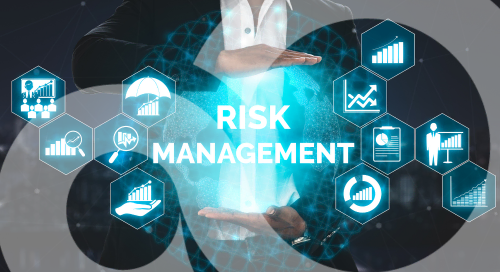What Is Integrated Enterprise Risk Management and Why Do You Need It?
Integrated enterprise risk management unites every strand of risk. From strategic, operational, financial, regulatory, cyber, to third-party, all forms of risk become streamlined under one data architecture. When things become more centralized, a streamlined workflow ensues. Instead of juggling separate spreadsheets, dashboards, and point solutions, teams instead tap into a shared information hub featuring a single source of truth. One that feeds real-time insight to both the boardroom and the frontline alike.
Did you know? One in two government and public sector integrity incidents were tied to a third party, like a supplier, customer, or joint venture partner.¹
How Does Integrated Enterprise Risk Management Work?
There is a unified risk register. This means impact, likelihood, and ownership sit in one taxonomy. Here, each and every threat is evaluated on identical terms.
What are some benefits? For one, there are more dynamic workflows. This means incidents, control tests, and action plans travel automatically to the right owners, shrinking response time.
Two, is the ability to conduct continuous analytics. Now, key risk indicators and control performance update live, flagging issues long before quarterly reviews.
An additional benefit is the alignment of standards. Now, frameworks integrate directly into scoring models. This means evidence is audit-ready, available right at your fingertips as needed, as regulations evolve.
Boards treat risk as fuel, not friction. 2025’s pressure points include supply-chain shocks and geopolitical flare-ups, billion-dollar climate disasters, AI-driven fraud and bias, and data-heavy transformations that are outpacing governance.²
Five Integrated Enterprise Risk Management Benefits
- Sharper visibility. When risk data, policies, incidents, and loss events converge in one view, hidden dependencies surface quickly. For example, think of supplier delays that ripple into production. Or an IT patch gap that exposes customer data.
- Decisive action. Simulations and heat maps can translate raw numbers into dollar-value exposure. This helps finance and operations leaders agree on next steps without guesswork.
- Lower cost of control. Automated alerts replace manual monitoring, freeing risk teams to focus on analysis instead of data wrangling. Standardized assessments eliminate duplicate efforts across business units.
- Stronger culture. Embedding policies, training links, and disclosure channels into everyday workflows turns risk awareness into routine behavior, versus another thing to complete on your to-do list.
- Board-ready insight. Executive dashboards roll up high-volume data into plain-language metrics. Metrics like top exposures, trend lines, and remediation status. This all makes it so much easier to champion risk-based decisions at the highest level.
Final Thoughts
Integrated enterprise risk management transforms fragmented practices into a single, resilient process. The payoff? Faster detection, faster mitigation, and a confident path to growth. All increasingly critical in a world where minor oversights can become headline-making crises overnight. Lock in risk appetite earlier rather than later, or you may risk falling behind.
¹EY: Integrated risk management a key area of focus for governments
²12 Top Enterprise Risk Management Trends in 2025 | Informa TechTarget



